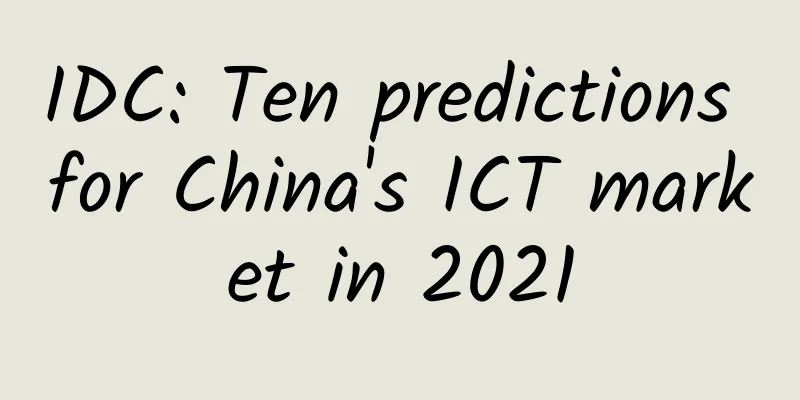What problems does each generation of HTTP protocol solve?

|
Recently, I briefly studied the development history of the HTTP protocol and made some summaries on it. Let's review the version evolution of HTTP one by one: HTTP/1.0 -> HTTP/1.1 -> HTTP/2.0 -> HTTP/3.0 (QUIC). HTTP/1.0HTTP 1.0 was first released in 1996, which stipulates that the connection between the browser and the server is only short-lived. Each browser request needs to establish a TCP connection with the server, and the TCP connection is immediately disconnected after the server completes the request processing. However, this method has defects, because the establishment of the TCP connection requires a three-way handshake, which causes each HTTP request to re-execute this cumbersome process, which is quite inefficient. HTTP/1.1HTTP 1.1 was released in 1997 and introduced a default persistent connection (Connection: keep-alive), eliminating the need to re-establish a TCP connection for each HTTP request. However, it did not solve the HOL (head of line) blocking problem. HOL blocking refers to when the number of parallel requests allowed by the browser is exhausted, subsequent requests need to wait for the previous request to complete. HTTP/2.0HTTP 2.0 was released in 2015, and it solved the HOL blocking problem by introducing multiplexing. This version divides a TCP connection into multiple streams, each of which can transmit multiple messages, and each message consists of multiple minimum binary frames. By assigning a stream ID to each user operation, a TCP channel is established with the server. This method allows each request from the client to start the next request, thus solving the head-of-line blocking at the application layer. However, although HTTP/2.0 solves the head-of-line blocking problem at the application layer, the transport layer (TCP) still has head-of-line blocking. Due to the reliability of the TCP protocol, that is, sending and receiving data in sequence, and being affected by congestion control, a small amount of packet loss may cause all flows on the entire TCP connection to be blocked. HTTP/3.0The first draft of HTTP 3.0 was released in 2020 and officially became the RFC9114 standard on June 6, 2022. HTTP/3.0 abandons TCP and adopts the QUIC protocol on UDP to transmit application layer data, thereby eliminating the head-of-line blocking problem at the transport layer. QUIC uses the UDP protocol to establish multiple independent streams between two endpoints, which means that in most cases, packet loss in one stream will not affect other streams. This innovation effectively solves the head-of-line blocking problem, making HTTP/3.0 a big step forward in performance and efficiency. HTTP 3.0 is not yet widely used, and there are only two problems I can think of. The first is the QOS or blocking of UDP in the CN region. It is not clear whether it will be relaxed in the future. The second is that the UDP protocol relies on 4-tuple information. Most devices without public IPv4 need to go through NAT conversion of routers or firewalls to communicate with the server. NAT devices cannot know when the UDP connection is disconnected, so deleting their own NAT records may cause the UDP connection that is still communicating to be disconnected. Later, my colleague told me that the QUIC protocol has something like ConnectionId, which can restore the connection even if the network environment is unstable. I looked it up and the technical term is: Connection Migration, and there is a proposal: https://datatracker.ietf.org/doc/html/draft-ietf-quic-transport-23#section-9 . Finally, I attach a picture drawn by other big guys. picture refer to • https://github.com/ByteByteGoHq/system-design-101 |
<<: Recommend a lightweight and fast file transfer tool for LAN
>>: Bluetooth: "You have joined the group chat"
Recommend
CommScope launches new access point portfolio to accelerate enterprise-class Wi-Fi 6 adoption
Shanghai, China, June 9, 2020 – CommScope recentl...
Why is the 4G network speed slowing down now? The Ministry of Industry and Information Technology gave the answer, netizens: It's really realistic
I don't know if you have noticed a significan...
Data security protection: How to choose between full backup, incremental backup and differential backup?
In IT operation and maintenance, data backup is v...
10 excellent log analysis tools that network administrators must have
If network administrators want to master network ...
5G Imagination in the Internet of Vehicles Makes Transportation Smarter
[[351620]] 5G is one of the Internet of Things co...
Which Ethernet (Cat5, Cat5e, Cat6, Cat6a) cable should I use?
Not all Ethernet cables are created equal. What a...
The impact of 5G technology on these 20 industries
5G, a new era product developed in response to th...
DogYun's new Hong Kong MG VPS starts at 70 yuan per year, 1GB memory/20G SSD/1TB monthly traffic
DogYun (狗云) Classic Cloud Server has a new Hong K...
RackNerd Mid-Autumn Festival Promotion, Los Angeles KVM Annual Payment Starting from $9.89
The Mid-Autumn Festival is still early, but the p...
Do you know the misunderstandings about 5G?
Today I will reveal to you five misunderstandings...
Interpretation of the 2020 data of the three major operators: Now you can use 5G with confidence
The three major operators released data for Decem...
Maxthon Hosting: Hong Kong CN2/CN2 High Defense/Korea CN2/Germany/Netherlands CU2VIP/Los Angeles CN2 GIA monthly payment starting from 54 yuan
It has been a long time since I shared informatio...
India's 5G auction ends: government earns $10.6 billion, but no one is interested in 700MHz
India’s latest spectrum auction ended after two d...
RAKsmart: US/Hong Kong/Japan VPS starting from $1.99 per month, G-port unlimited traffic server starting from $199 per month
RAKsmart is an early-established foreign hosting ...
Huawei Cloud 12.12 Membership Festival invites you to join the carnival. In the 5G era, Huawei Cloud is the right choice!
[51CTO.com original article] Guess what the first...









